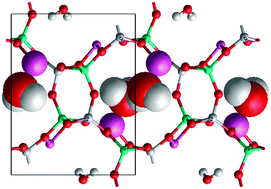Zeolite synthesis: an energetic perspective
Abstract
Taking |D(H2O)x|[AlSiO4] based materials (where D is

* Corresponding authors
a
Departament de Química Física and Institut de Química Teòrica i Computacional (IQTC-UB), Universitat de Barcelona, E-08028 Barcelona, Spain
E-mail:
m.a.zwijnenburg@ub.edu
b Institució Catalana de Recerca i Estudis Avançats (ICREA), E-08010 Barcelona, Spain
Taking |D(H2O)x|[AlSiO4] based materials (where D is

 Please wait while we load your content...
Something went wrong. Try again?
Please wait while we load your content...
Something went wrong. Try again?
M. A. Zwijnenburg and S. T. Bromley, Phys. Chem. Chem. Phys., 2010, 12, 14579 DOI: 10.1039/C0CP01045F
To request permission to reproduce material from this article, please go to the Copyright Clearance Center request page.
If you are an author contributing to an RSC publication, you do not need to request permission provided correct acknowledgement is given.
If you are the author of this article, you do not need to request permission to reproduce figures and diagrams provided correct acknowledgement is given. If you want to reproduce the whole article in a third-party publication (excluding your thesis/dissertation for which permission is not required) please go to the Copyright Clearance Center request page.
Read more about how to correctly acknowledge RSC content.
 Fetching data from CrossRef.
Fetching data from CrossRef.
This may take some time to load.
Loading related content
